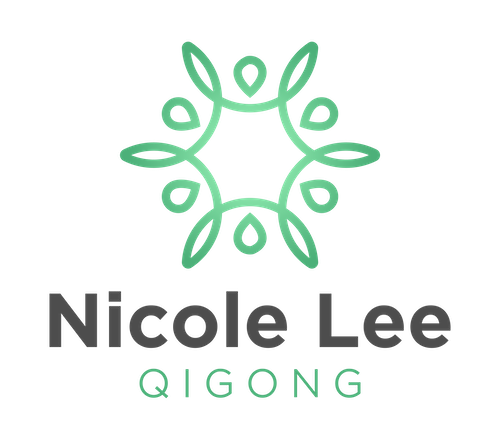Why a Certificate Won’t Make You a Qigong Teacher
Did you know that Qigong Teacher Training in Australia (and many other places) doesn’t actually require accreditation or certification to teach? There are no requirements for a minimum level of training — and with the thousands of forms, lineages, traditions, and practices, it would be almost impossible to create a single standard anyway.
Here’s the thing: a certificate doesn’t make you ready to teach Qigong.
What really matters is embodiment. Integrity. Devotion. And those don’t come from a piece of paper. They come from showing up, from building a living relationship with Qigong, and from mentorship with a teacher who knows the path.
Why I Changed My Qigong Teacher Training Approach
For a long time, my Qigong Teacher Training ran over six months, starting with a 3-day immersion. On paper, it looked solid, and many students did well. But over time, I noticed something:
Students would leave the immersion feeling inspired, but as the months went by, many didn’t fully invest in their practice. By the time assessments came around, their submissions often showed only the “bones” of the forms — the outer shapes of Qigong — without the depth, the embodiment, the energetic expression.
I found that many students weren’t yet meeting the standard for certification. It wasn’t that they didn’t care, but without proper mentorship, most reached the end of their program with only the surface of Qigong. I couldn’t, in integrity, continue with a model that left them in that place, because it wasn’t what this practice deserves, or what my students truly need.
Ultimately, becoming a skilled Qigong teacher is like becoming an artist. Imagine attending a 3-day painting immersion, learning a few techniques, then picking up your brush a couple of times a month. Six months later — would you be a masterful artist? Highly doubtful.
How Mentorship Transforms Qigong Teacher Training
Take Danielle, for example. She completed her training, and her assessments showed “really great bones,” but she didn’t quite meet the proficiency level for certification. Instead of walking away, she chose a short mentorship — and that’s when everything shifted.
Here’s what she shared:
“The mini mentorship has been very enriching for me and key to my development. I commenced my teacher training not realising how much would be involved but soon became aware there was much to learn and many layers to the practice.
Over time I not only began to remember the forms but feel them. Nicole provided honest, yet supportive feedback. After being a bit apprehensive for the first session, I really looked forward to consequent one-to-ones and built upon the feedback given.
Having the two-way conversation enabled me to become aware of what needed improvement, ask questions and refine my forms. It was also more personable. I was a bit nervous about demonstrating the class practice to such an experienced teacher. I practiced and became more confident and relaxed as I did it and have taken on board feedback.
I’m very grateful, proud (and a bit relieved) to have come this far and achieve the certification. Looking forward to what lies ahead. Thank you Nicole – it is clear how passionate and committed you are, and I appreciate you taking the approach you have.”
Danielle’s story isn’t unusual. A lot of students are surprised by the level of engagement, attention to detail, and consistent practice the Qigong Teacher Training requires.
Learning some gentle movements, shapes, and postures is one thing. Moving with Qi — really feeling it, expressing it — is another. And this is why mentorship matters so much. A skilled teacher helps you attune to energy, to inhabit the forms, to express Qi rather than just “doing a movement.”
Qigong Teacher Training: Accreditation vs Embodiment
Yes, certification can provide structure and a sense of achievement. For some, it’s the thing that pushes them to dig deeper. That’s why I still offer it — but now as an option, not the goal. Accreditation doesn’t make you a teacher.
What makes you a teacher is your commitment to embodying the practice, living it, sharing it with integrity, and staying devoted to your own cultivation.
Walking the Qigong Teacher Training Path
When I look back on my own journey, it wasn’t certificates that shaped me. It was showing up, making mistakes, refining, and receiving guidance from teachers who helped me see what I couldn’t see on my own.
If you want to truly learn Qigong, the best way is through long-term, in-person group training. For those who can’t attend in-person, 1:1 online mentorship is the next best option. Even students in in-person group programs often benefit from at least a short mentorship to deepen their practice. If you’re serious about learning — let alone teaching — you need relationship, feedback, and a guide who will both challenge and support you.
So if you feel called to teach Qigong, here’s what matters: you don’t necessarily need accreditation, but you do need a skilled teacher or mentor. And you need to be called for the right reasons. Teaching Qigong is not just another line on a résumé. It is a path of devotion and service.
Qigong is an art — a skill of sensing, feeling, and expressing frequency that is alive and palpable.
If this resonates with you, ask yourself: are you ready to be mentored, challenged, and truly guided into embodiment? That’s where the real journey begins. That’s where your practice deepens, your expression of Qigong comes alive, and where you can eventually share it with others from a place of integrity, presence, and devotion.


